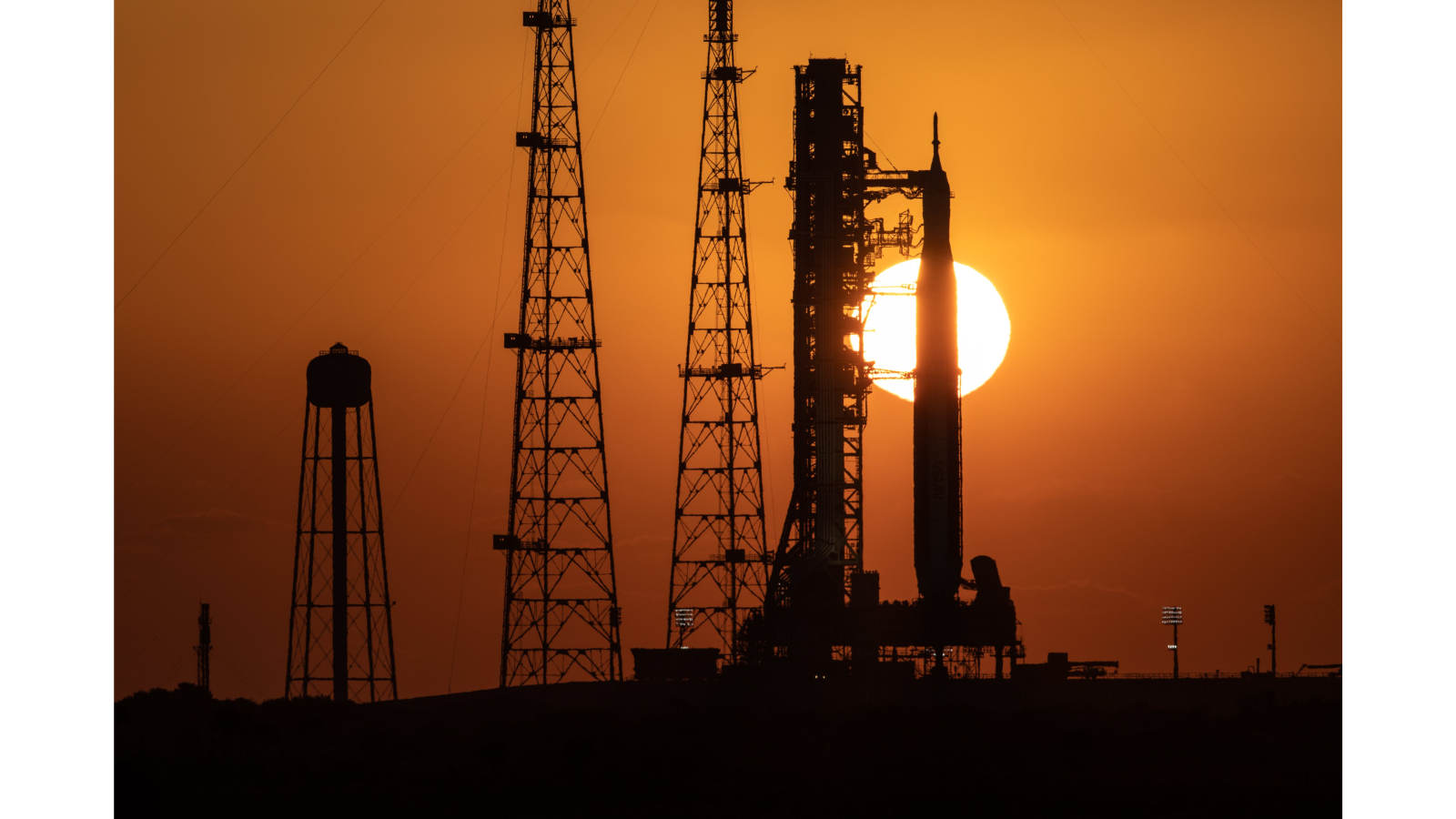NASA begins critical test for Artemis 1 moon megarocket

NASA's Artemis 1 moon mission is about to embark on a critical prelaunch test.
The space agency plans to begin the "wet dress rehearsal" for Artemis 1 this afternoon (April 1) at Launch Pad 39B at Kennedy Space Center (KSC) in Florida. The three-day test will take the Artemis 1 stack — a Space Launch System (SLS) megarocket topped with an Orion crew capsule — through many of its prelaunch procedures, to ensure that its various systems are behaving as expected. Essentially, the test will see the mission team walk through (most of) the steps of a real launch, minus the launch itself.
The wet dress officially began today at 5 p.m. EDT (2100 GMT) with a "call to stations." NASA is providing a live view of the rocket on the pad, which you can see below, as well as updates via the mission's blog and its Exploration Ground Systems Twitter feed.
Related: NASA's Artemis 1 moon mission explained in photos
NASA's Artemis 1 moon mission: Live updates
The call to stations "is a big milestone, because it is the time in which we are calling our teams, notifying them that the wet dress rehearsal test is officially underway," Charlie Blackwell-Thompson of KSC, the Artemis launch director for NASA's Exploration Ground Systems program, said during a news conference on Tuesday (March 29).
The call to stations also starts the 45-hour countdown clock ticking for the test. Over the next 24 hours following the call, Artemis 1 team members will check off a number of boxes, from filling the water tanks of the launch pad's sound-suppression system to powering up Orion and the SLS core stage.
But most of the action will take place on Sunday (April 3). Among other tasks on that day, the team will pump more than 700,000 gallons (3.2 million liters) of propellant into the SLS tanks.
Breaking space news, the latest updates on rocket launches, skywatching events and more!
At around 2:25 p.m. EDT (1825 GMT) on Sunday, the launch director will poll team members, asking if they're ready to enter terminal count (for test purposes, not to actually launch the rocket), according to a NASA wet dress rehearsal explainer.
That count will proceed all the way down to 33 seconds before "launch," when it will be stopped. The team will then recycle back to 10 minutes before T-0 and run through the steps again, this time stopping less than 10 seconds before liftoff.
Most likely, you won't be able to follow these steps closely in real time, because NASA does not plan to provide live commentary or stream the Artemis 1 team's communications. However, you can follow updates online that the agency plans to post on its Artemis blog and on Twitter. NASA also plans to stream video of the Artemis 1 stack on the launch pad during the test here.
The results of the wet dress rehearsal will inform NASA's further preparations for Artemis 1, which will send an uncrewed Orion on a roughly month-long mission around the moon. The team has not yet set a target date for Artemis 1, which is expected to lift off in June at the earliest.
Mike Wall is the author of "Out There" (Grand Central Publishing, 2018; illustrated by Karl Tate), a book about the search for alien life. Follow him on Twitter @michaeldwall. Follow us on Twitter @Spacedotcom or on Facebook.

Michael Wall is a Senior Space Writer with Space.com and joined the team in 2010. He primarily covers exoplanets, spaceflight and military space, but has been known to dabble in the space art beat. His book about the search for alien life, "Out There," was published on Nov. 13, 2018. Before becoming a science writer, Michael worked as a herpetologist and wildlife biologist. He has a Ph.D. in evolutionary biology from the University of Sydney, Australia, a bachelor's degree from the University of Arizona, and a graduate certificate in science writing from the University of California, Santa Cruz. To find out what his latest project is, you can follow Michael on Twitter.
